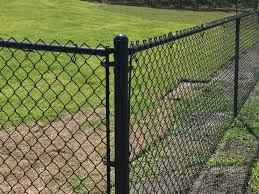
Navigating Limits: The Role of Fences in Freedom
Above their functional energy, fences carry serious symbolic value in human being societies, symbolizing methods of acquisition, personal identity, and societal limitations. As physical manifestations of restrictions, fences form our perceptions of place and affect our interaction using the created environment. Let’s investigate the symbolic incredible importance of fences (ploty) and discover why these are not just structures—they are emblems of human culture and society.
1. Ownership and Territory:
fences (ploty) signify possession and territorial borders, marking where a single residence stops and the other begins. By defining restrictions, fences create feelings of acquisition and control of land, reinforcing individual or combined personality. In countryside places, fences function as concrete markers of land possession, delineating career fields, pastures, and house facial lines. In downtown settings, fences demarcate exclusive house from community room, asserting acquisition and exclusivity.
2. Interpersonal Section and Exclusion:
Fences may also stand for societal divisions and exclusions in community. Great surfaces and obstacles may indicate break up and inequality, making actual boundaries that split neighborhoods depending on socio-economical position or another elements. On the other hand, fences with open up gateways and lower surfaces signify inclusivity and link, inviting connections and cultivating a feeling of group. The design and style and presence of fences reveal underlying sociable dynamics and strength components.
3. Societal Identity:
In numerous civilizations, fences carry strong ethnic significance and therefore are imbued with symbolism that mirrors societal ideals and traditions. As an example, in a few civilizations, elaborate fences are signs of status and reputation, showcasing prosperity and wealth. On the other hand, in other cultures, simple and useful fences might be highly valued with regard to their practicality and utilitarianism. Comprehending the social framework of fences allows us to value their symbolic value in various societies.
4. Mental health Limitations:
Fences also can signify mental health boundaries that define personalized area and autonomy. By making actual physical barriers, fences give those that have a sense of stability and privacy, allowing them to determine borders and management usage of their private place. This sense of boundary manage is essential for sustaining psychological well-becoming and interpersonal interactions, mainly because it permits visitors to assert their autonomy and safeguard their personal restrictions.
5. Ecological Affect:
The proliferation of fences has environment implications, specifically in all-natural countryside and wildlife environments. Substantial fencing can fragment habitats and interrupt animals corridors, impacting biodiversity and ecosystem wellness. Even so, eco-helpful fencing choices, for example wild animals-warm and friendly designs and permeable boundaries, offer remedies that equilibrium human requirements with ecological conservation. By lessening their ecological footprint, fences can contribute to the preservation of normal panoramas and wildlife habitats.
In conclusion, fences are more than simply actual physical components they can be emblems that signify intricate societal, ethnic, and emotional dynamics. As guardians of boundaries, fences form human relationships and scenery, exhibiting and strengthening social values and norms. Appreciating the symbolic importance of fences improves our comprehension of the developed setting and our partnership using the property.
Proudly powered by WordPress. Theme by Infigo Software.